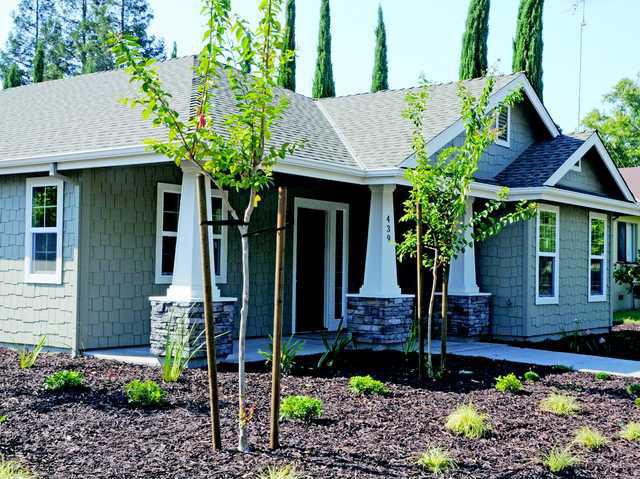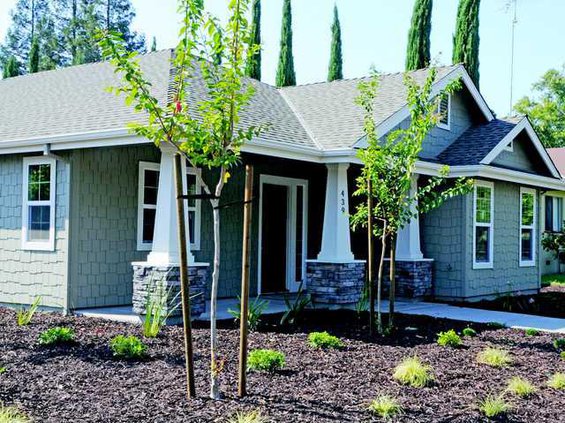A lottery next month means some lucky family that meets moderate income qualification and passes credit worthiness standards will be able to buy an affordable home in one of Ripon’s well-established, desirable neighborhood.
It is the latest in Ripon’s ongoing efforts to address a problem that’s been perplexing California cities for years and has been placed at the top of the agenda for state legislators that returned to Sacramento this week — affordable housing.
The new home the city constructed at 439 S. Acacia Ave. using fees the developers of new neighborhood paid in lieu of incorporating below market housing in 10 percent of their projects is being showcased Friday, Aug, 25, and Saturday, Sept. 2, from 10 a.m. to 2 p.m. during an open house.
It consists of 1,718 square feet with three bedrooms and one bathroom on a corner lot. There is a detached two-car garages with 576 square feet. The home also has drought resistant landscaping in place that complies with city standards.
Application packets are available at the city’s website cityofripon.org under public notices or at Ripon City Hall, 259 N. Wilma Ave., Monday through Thursday from 7:30 a.m. to 5:30 p.m. The deadline for completed packets from income qualified buyers is Monday, Sept. 18, at 5:30 p.m. The lottery takes place Thursday, Sept. 28, at 6 p.m. Applicants cannot own another home or property.
The city has already sent out 80 application packets to families that had asked to be on a waiting list.
Qualified buyers cannot exceed Housing and Urban Development income limitations established for Ripon based on household size that are as follows: $51,150 for one person, $58,450 for two persons, $65,750 for three persons, $73,050 for four persons, $78,900 for five persons, $84,700 for six persons, $90,550 for seven persons, and $96,400 for eight persons.
The sales price of the home is determined by the maximum monthly cost for a three bedroom moderate unit under state law governing such programs. In this case it is $1,750 a month and includes principal, interest, property taxes, insurance and any mortgage insurance that is required.
Whatever the home appraises at, the difference between the maximum payment allowed and the value will be covered by a silent second mortgage held by the City of Ripon. No payments are required by the buyer on the second mortgage. It is forgiven over a 30-year period assuming the buyer remains compliant with all program requirements.
Should the buyer need to sell for whatever reason before 30 years lapse — say in 10 years — they would owe a pro-rated amount for the second mortgage based on 20 years remaining.
The City of Ripon purchased the site when redevelopment agencies still existed before Sacramento pulled the plug on them to help balance the state’s general fund. It was an 870-square-foot home in poor condition that had been foreclosed. When HUD couldn’t find a buyer, they offered to sell it to Ripon. The city had targeted the site for new housing.
With the elimination of RDA, the state required the sale of all properties that local agencies held that didn’t meet certain conditions.
Concerned that the home would likely be sold at auction to an investor that would rent the property and not eliminate blight issues by replacing it, the city essentially bought the older home a second time. It was keeping with the City Council’s policy of pursuing affordable housing throughout the city as well as addressing blight.
Ripon has a solid reputation for a small community of working to address affordable housing needs.
A development requirement put in place during the boom that started in the late 1990s required developers to set aside 10 percent of all housing units they built for below market or moderate income buyers.
Kevin Zuidervaart, Ripon’s director of Planning and Economic Development, noted when representatives of other cities made inquiries about Ripon’s affordable housing effort, they would drive them around the city to see if they could pick out the affordable housing units. They couldn’t.
“On the outside they looked the same, although they were smaller homes,” Zuidervaart said. “Inside they wouldn’t have things such as granite counter tops.”
Developers could develop 10 percent of their units as affordable or pay in lieu fees. It was that fee account the city tapped for the South Acacia home project.
The city has since modified the affordable housing requirement for new developments to base it on the Federal Housing Administration loan cap for the area that is now at $360,000. Manteca and Lathrop do not require affordable housing to be a part of new housing projects in their respective cities.
Of the 5,000 housing units in Ripon, roughly 200 affordable homes were made possible through the development process of pass through funds from the federal government to reduce housing payments for qualifying moderate income households. Nearly $9 million worth of such loans are on the books.
To contact Dennis Wyatt, email dwyatt@mantecabulletin.com
AFFORDABLE HOME LOTTERY
Ripon continues to address affordable housing needs



